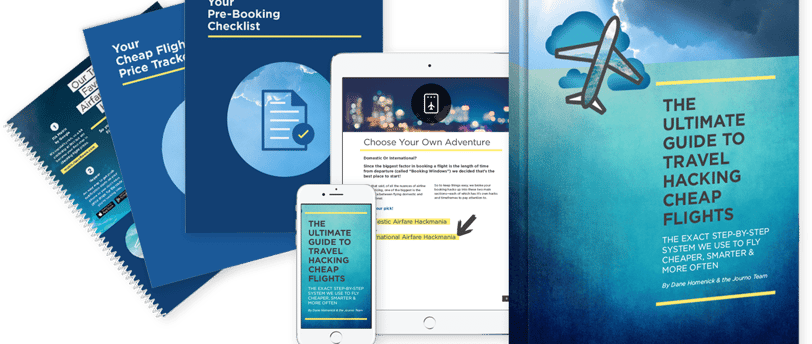The Ultimate Guide on Hacking the Cheapest Airfares
9/1/20244 min read
Understanding Airline Pricing
Airline ticket pricing is an intricate and multifaceted process, influenced by a variety of factors that can significantly impact the final cost of a flight. A key element in this equation is fuel costs, which are highly volatile and can cause fluctuations in airfares. When fuel prices soar, airlines often pass these additional expenses onto consumers, leading to higher ticket prices. Conversely, a dip in fuel costs can sometimes result in more favorable fares.
Demand and seasonality play crucial roles as well. High travel seasons such as summer, holidays, and spring break typically see elevated prices due to increased demand. Off-peak seasons, when fewer people are traveling, often offer opportunities to secure cheaper tickets. Moreover, airlines closely monitor booking patterns and economic trends to adjust fares according to real-time demand.
Competition among airlines is another significant factor. In markets where multiple airlines operate, competitive pressures can lead to reduced fares as each airline seeks to attract more passengers. Conversely, in markets with little competition, prices may be steeper due to the lack of alternatives available to consumers.
Dynamic pricing strategies and fare classes are also instrumental in determining ticket prices. Airlines employ sophisticated algorithms and data analytics to set prices dynamically, adjusting them by the minute based on factors such as booking time, remaining seat capacity, and historical data. Different fare classes, from economy to business to first class, offer varying levels of service and amenities, and accordingly, come with different price tags. Additionally, within these classes, airlines further segment tickets into various fare buckets, each with its own pricing and availability.
Understanding these variables can empower travelers to make informed decisions and seize opportunities to hack the cheapest airfares. By keeping an eye on fluctuating fuel costs, recognizing peak travel seasons, monitoring fare trends across different airlines, and being aware of dynamic pricing mechanisms, one can navigate the complexities of airline pricing and find the best deals for their journeys.
```html
The Best Time to Book for Cheap Flights
When it comes to securing the cheapest airfares, timing plays a pivotal role. Various studies conducted by the travel industry illuminate the best times to book flights, underscoring the importance of strategic planning. One key insight is that purchasing tickets on certain days of the week can yield significant savings. Historically, mid-week days such as Tuesday and Wednesday are prime for snagging lower fares due to decreased demand and targeted sales by airlines.
Beyond the day of the week, the timeline from booking to departure is crucial. For domestic flights, booking between one to three months in advance tends to result in the lowest prices. On the other hand, international travel usually demands a longer lead time, with the optimal window often ranging from five to six months before departure. These guidelines help travelers avoid the spikes in prices that occur as the departure date approaches.
Monitoring fare trends can be an effective way to pinpoint the best time to book flights. Utilizing fare comparison tools and subscription services for price alerts can keep you informed about price drops and flash sales. Websites and apps such as Skyscanner, Kayak, and Google Flights are excellent resources for tracking airfare fluctuations. These tools not only inform you of the most cost-effective times to buy but also offer predictive analytics on future price changes, empowering you to make well-timed purchases.
Timing isn’t limited to general trends but also extends to taking advantage of special sales. Airlines frequently offer discounted rates during sales events like Black Friday, Cyber Monday, and seasonal promotions. Booking during these periods can lead to substantially cheaper airfares. Additionally, understanding the distinct booking windows for domestic and international flights helps ensure you’re making the most cost-efficient decision based on where and when you plan to travel.
By integrating these travel hacks and leveraging technology, you position yourself to hack the cheapest airfares effectively. Whether planning a trip months in advance or capitalizing on last-minute deals, strategic timing is your strongest ally in securing affordable flights.
```
Top Travel Hacks for Securing Cheap Airfare
Finding affordable airfare can feel like searching for a needle in a haystack, but with the right strategies, you can unlock significant savings. One lesser-known tactic is hidden city ticketing, where travelers book a flight with a layover at their actual destination, disembarking at the intermediate stop rather than the ticketed final destination. While this can result in cheaper flights, it’s important to be aware of potential airline policies that may frown upon this practice.
Another effective method is utilizing multiple airlines for a single trip. Instead of booking round-trip tickets with one airline, compare prices across different airlines for each leg of your journey. Often, this approach can yield better deals, especially on international flights. Additionally, signing up for frequent flyer programs can accrue miles that offer discounts or even free flights over time, making regular travel more affordable.
To stay updated on sudden price drops, consider subscribing to flight alert services and newsletters. These platforms monitor fares round the clock, sending notifications when prices plummet, ensuring you never miss out on a great deal. Moreover, leveraging tools and apps like Google Flights, Hopper, and Skyscanner can help in tracking price trends and finding the lowest fares. These tools often include predictive algorithms that suggest the best times to book your tickets.
Lastly, becoming well-versed in the best times to book can be a game changer. Conventional wisdom suggests that Tuesdays and Wednesdays are generally the cheapest days to fly, while booking flights several months in advance can also secure better prices. However, flexibility with travel dates and times increases the likelihood of grabbing those elusive cheap flights.
Equipped with these travel hacks, you’ll be well-prepared to navigate the complexities of the airline industry and secure the cheapest airfare possible. Happy traveling!
Travel
Budget-friendly tips for your travel adventures.
Discover
© 2024. All rights reserved.


